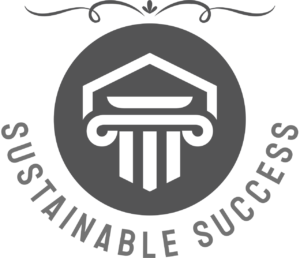In an era where environmental concerns are at the forefront of global discourse, the marriage between green ideals and business profitability has become a critical point of discussion. The evolution from mere sustainability aspirations to tangible, profitable realities has not only transformed industries but has also underscored the potential for businesses to drive positive change while reaping financial rewards. This article delves into the journey of turning green ideals into profitable business ventures, exploring the strategies, challenges, and success stories that exemplify the powerful fusion of sustainability and economic growth.
The Genesis of Green Ideals:
The inception of green ideals within the business landscape marked a paradigm shift – a departure from traditional profit-focused models toward more conscientious and ethical practices. Companies began to recognize the significance of aligning their operations with environmentally friendly principles, driven by growing consumer demands for sustainability and a heightened awareness of ecological challenges. While these ideals were once seen as divergent from profitability, the narrative has evolved, with businesses realizing that the pursuit of sustainability can indeed lead to substantial economic gains.
The Bridge Between Ideals and Realities:
The transformation from green ideals to profitable business realities requires a strategic and holistic approach. One key aspect is innovation. Forward-thinking companies have harnessed their commitment to sustainability as a catalyst for innovation, birthing novel products, services, and technologies that address environmental concerns while meeting market demands. Tesla’s electric vehicles and Apple’s renewable energy initiatives stand as quintessential examples of this synergy.
Yet, innovation alone is not sufficient. The integration of sustainability into core business operations is paramount. Leading companies have embedded eco-friendly practices across their value chains, from sourcing raw materials sustainably to optimizing energy consumption during production and distribution. This comprehensive integration not only reduces the ecological footprint but also streamlines operations, cuts costs, and enhances overall efficiency.
Navigating Challenges and Seizing Opportunities:
While the journey from green ideals to profitable realities is promising, it is not without challenges. Initial investments in sustainable technologies and practices can be daunting, and businesses may encounter resistance to change from within their ranks. Regulatory landscapes can also pose hurdles, with varying standards and compliance requirements across different jurisdictions.
However, these challenges also present opportunities for innovation and differentiation. Companies that proactively embrace sustainability stand to gain a competitive advantage. They can tap into the burgeoning market of environmentally conscious consumers who are willing to pay a premium for products and services that align with their values. Additionally, by staying ahead of evolving regulations, businesses can position themselves as industry leaders and demonstrate a commitment to long-term viability.
Success Stories that Inspire:
Numerous success stories highlight the symbiotic relationship between green ideals and profitability. Unilever, for instance, embarked on a Sustainable Living Plan, which not only reduced the company’s environmental impact but also boosted its bottom line. By 2020, Unilever’s sustainable brands were growing 69% faster than the rest of the business, showcasing the tangible benefits of their commitment to sustainability.
Another shining example is Patagonia, the outdoor clothing company. Patagonia’s dedication to environmental preservation and responsible sourcing has resonated with consumers, fostering brand loyalty and attracting a community of environmentally conscious patrons. This allegiance has translated into robust sales figures, affirming that sustainability-driven business models can indeed yield impressive financial outcomes.
The Road Ahead:
As businesses continue their journey from green ideals to profitable realities, collaboration and knowledge sharing are pivotal. Industry partnerships, cross-sector alliances, and the dissemination of best practices can accelerate the adoption of sustainable strategies across the board. Governments and regulatory bodies play an indispensable role in creating an enabling environment that incentivizes businesses to prioritize sustainability.
Takeaway
In conclusion, the trajectory from green ideals to profitable business realities represents a transformative juncture in the corporate landscape. The fusion of sustainability and profitability is no longer a mere aspiration but a tangible prospect that benefits businesses, society, and the environment at large. With innovation, integration, and perseverance, companies can position themselves at the forefront of this movement, reaping the rewards of sustainable practices while shaping a greener, more prosperous future for all.

